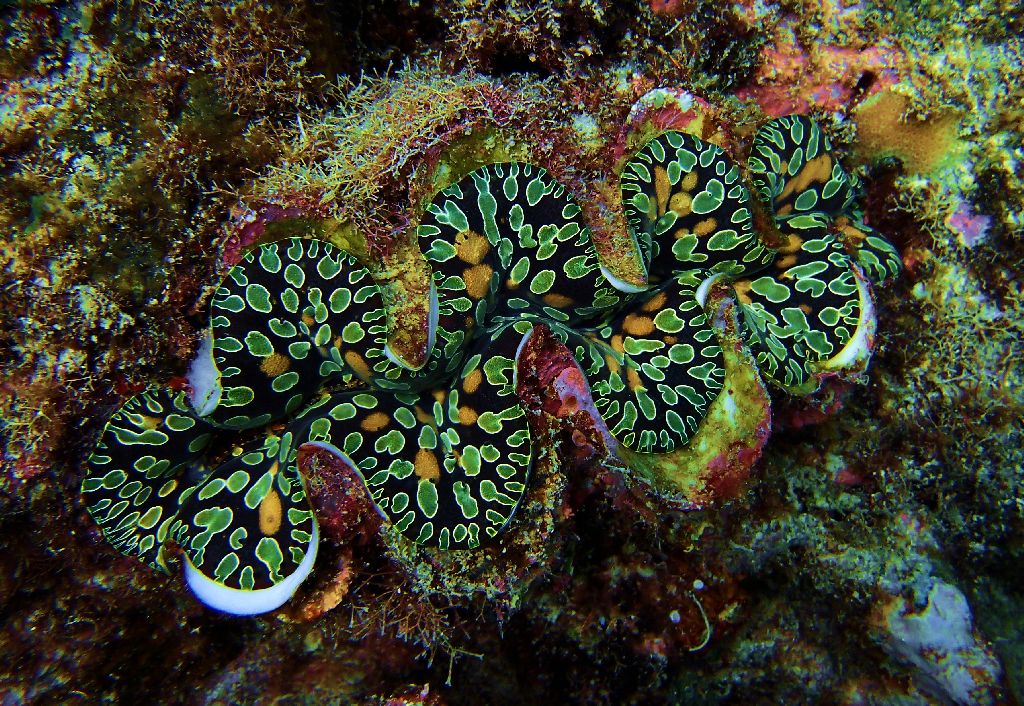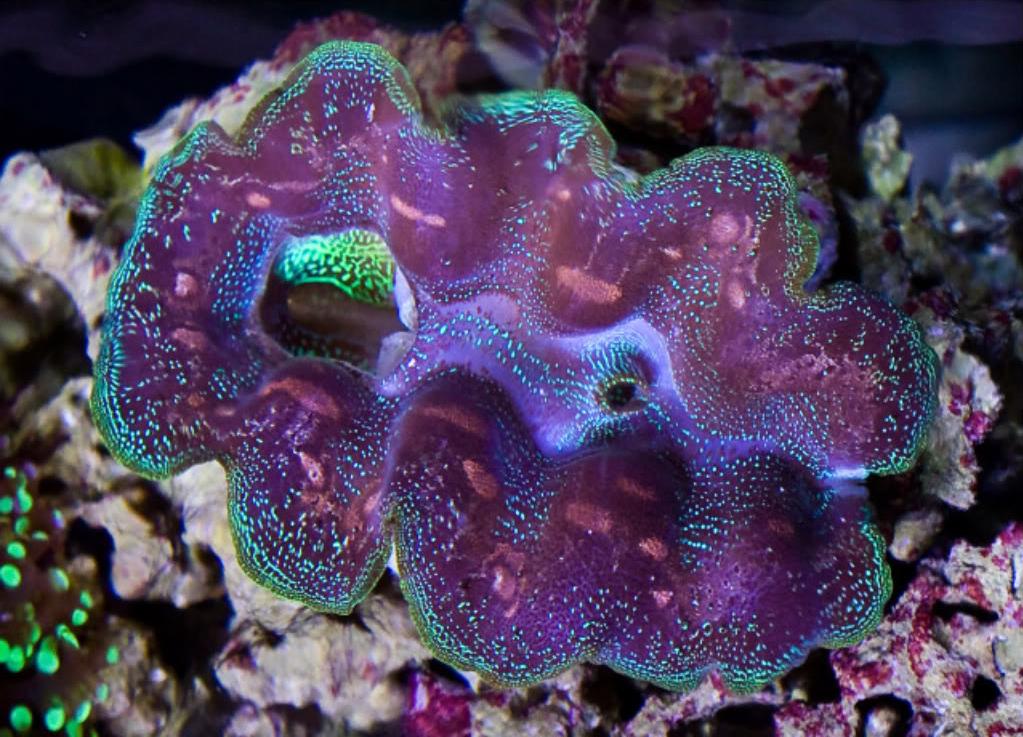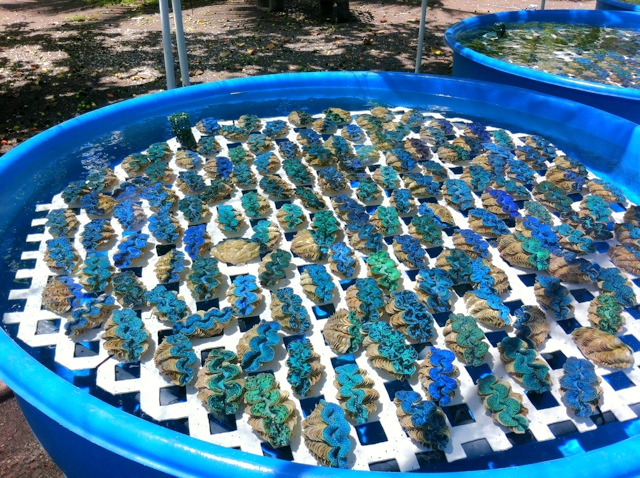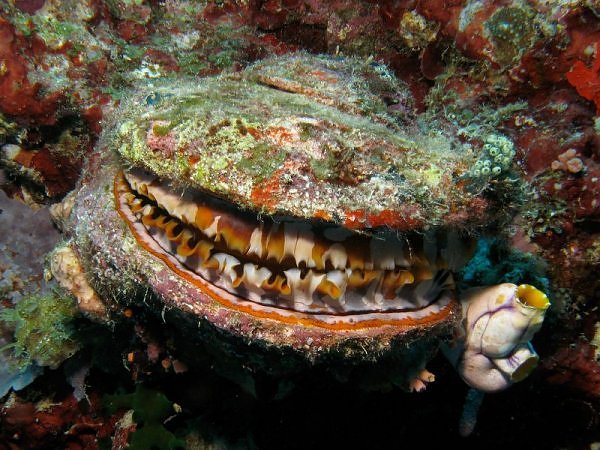Clams: A Basic Guide
Many of us picture a gigantic clam with a mermaid in its mouth when we think of the ocean, unless we are picturing sharks of course. Clams are one of the strangest creatures around. They live in waters from the deep sea all the way down the street from me in our not so clean river in Indiana. Clams have been apart of many cultures. They look and taste great! So how do we keep them in our tanks? The odds are that you are seeing clams at you LFS. These clams are different from your everyday river clam. They are PHOTOSYNTHETIC!!! And not like soft corals these things need tons of light. More light than most corals as a matter of fact. These creatures have such thick tissue that the light must be strong to penetrate through or you will be left with nothing but a shell. Light is not the only requirement, as they are also filter feeders. Clams need mature tanks that have minimal fluctuations in the water.

beautiful clam in the wild via ladybugcruise.blogspot.com
Clams are Filter feeders, but not filters. Do not rely on a clam to clean your water, as they only poop like the rest of us earthlings. Even Hitch-hiker clam like critters that come on live rock will not filter your tank! The only thing the clams will actually fully remove from the water is Calcium. These animals use a TON of it to make their shells! Before you get a clam you must have a calcium test kit and any type of calcium supplement of your choice.

image via reef2reef member Dave3112
Another consideration when housing clams is lighting. The usual lighting requirement was metal halide, but LEDs are proving to be quite clammy! The light color will matter if you want to have a florescent effect and a clam that pops, as they have quite amazing coloration on their mantles that would otherwise be washed out. Maintaining Calcium, Alkalinity, and Magnesium is important to keep them all alive.
Derasa clams, or Giant Clams, are quite amazing. As juvenile clams they stick to the rocks until they reach maturity, where they will dislodge themselves and make their way to the sand to live their adult life. They reach 16 inches, so a large tank is very necessary for these guys. They are considered an easier clam to keep, and starting them on the sand bed seems to work best, as they will move to a more comfortable location if needed. These can live off good lighting alone, but will benefit from occasional plankton. These clams are less demanding than some of the other species. For more details check out this link: Derasa Clam Spotlight

image via reef2reef member FishLipz
Crocea clams are a little different than the derasa. They live in the rocks mainly, which usually gets more light than the sand bed in the ocean. These clams are fairly hardy as long and handle varying quality of water as long as the temperature and pH are not going crazy. Place these clams in the rock, unless it is brown when you receive it. This just means it needs to heal itslef, which then a lower light area would be a good start as its body acclimates to your water, then slowly move it up to the desired location. They like a faster current as well. Don’t be afraid to stick him in a faster area. Adult clams don’t need supplemental feeding, but baby ones smaller than two inches will need green water or phytoplankton. Again, as long as your water and lighting is good, so will your Crocea. Here’s a few more details on the specifics of Crocea care: A Reef 2 Reef Spotlight “Tridacna Crocea”

maxima clam farm image via PacificEastAquaculture
Maxima clams are cool critters! In the wild they will burrow out a crevasse that hides the bottom third of their shells while they attach to nearby objects with their byssus and usually stick there for their whole life. In the Aquarium this is uncommon. If the clam has not started making a burrow as a tiny juvenile it is highly unlikely that it will ever burrow. Picky clams, huh? These also do not require supplemental feeding, as their symbiotic algae produces far more energy than the average clam can produce given the right lighting. In fact, these clams internally farm so much zooxanthellae that they even consume some of them! Too bad fish can’t feed themselves like that! These clams also filter feed a wide variety of particulates from the water column, but again, these ARE NOT FILTERS, JUST FILTER FEEDERS!! THEY STILL POOP LIKE THE REST OF US! Make sure to keep up with water quality or you will have a stink on a half shell!
Tank requirements are not too demanding though, like most corals, they can be added after the tank is mature and fully cycled. Good flow, clean water, a lot of space to grow, and a good light will give your clam a happy captive life. Just look at that smile!!!

Image by Landfeldt
To comment and see what others are saying about this topic please click here!
One Response to Clams: A Basic Guide
-
Pingback: Clams: A Basic Guide - Reefs.com
